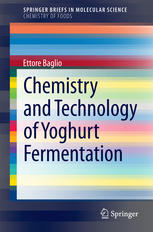

Most ebook files are in PDF format, so you can easily read them using various software such as Foxit Reader or directly on the Google Chrome browser.
Some ebook files are released by publishers in other formats such as .awz, .mobi, .epub, .fb2, etc. You may need to install specific software to read these formats on mobile/PC, such as Calibre.
Please read the tutorial at this link: https://ebookbell.com/faq
We offer FREE conversion to the popular formats you request; however, this may take some time. Therefore, right after payment, please email us, and we will try to provide the service as quickly as possible.
For some exceptional file formats or broken links (if any), please refrain from opening any disputes. Instead, email us first, and we will try to assist within a maximum of 6 hours.
EbookBell Team

4.4
72 reviewsThis Brief reviews the chemistry behind the production of yoghurt through acidification of milk. It quantifies the changes in physical and chemical properties of yoghurt during fermentation with microbial organisms (such as Lactobacillus bulgaricus and Streptococcus thermophilus). It has been found that this symbiosis has an optimal development at a temperature of ca. 45°C with the transformation of lactose into lactic acid and small amounts of acetaldehyde, diacetyl and volatile acids. This Brief explains the chemical and physical results of the fermentation process, such as precipitation of proteins and the acid coagulation of milk with a clot formation in the final semi-solid mass. The Brief sheds light on the accomplishments of the fermenting organisms: they are responsible for the biochemical reactions of carbohydrate metabolism, proteolysis, lipolysis and flavour production in the process of yoghurt production. It also briefly reviews formulations and food additives used in the modern yoghurt producing industry.